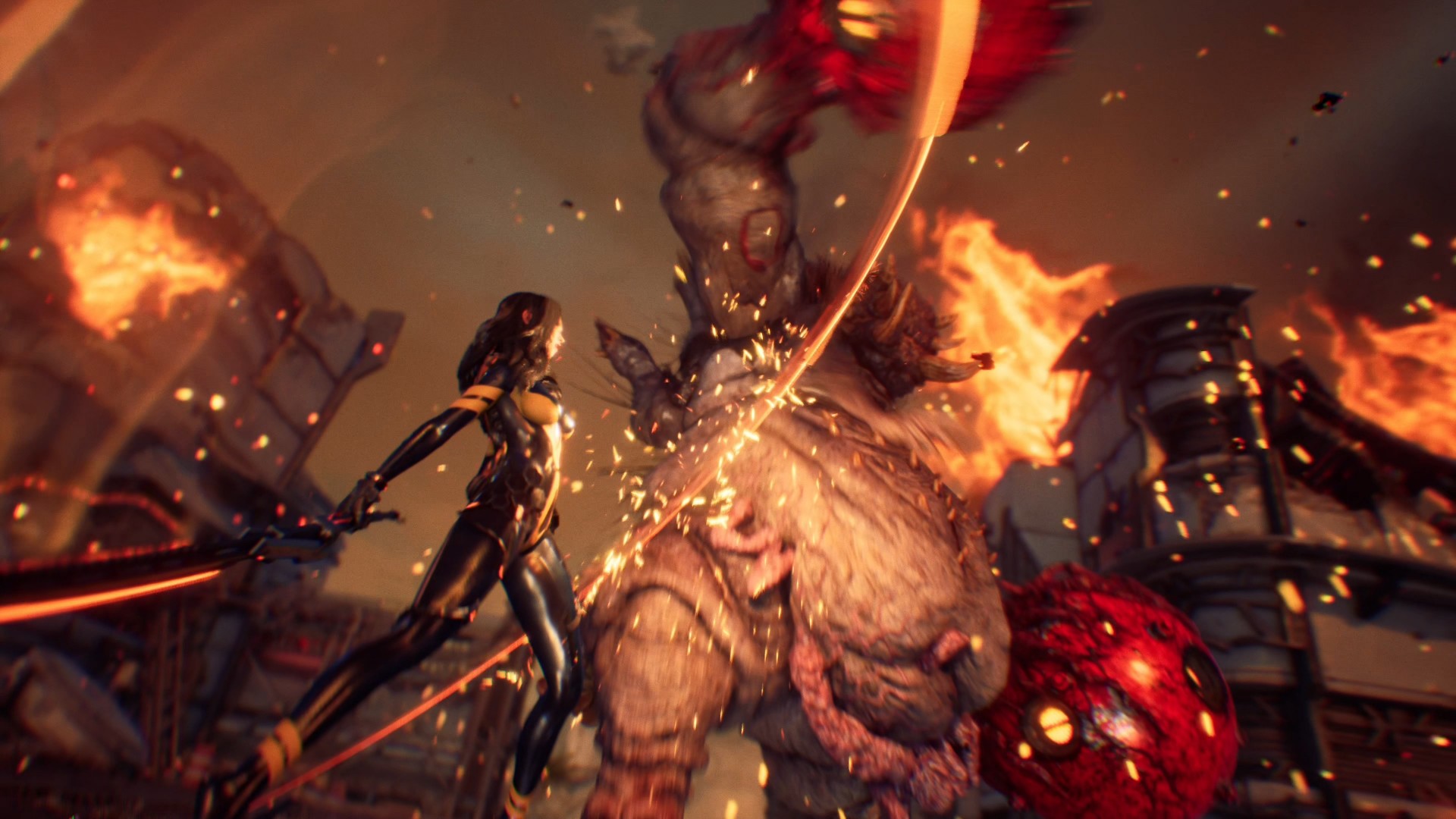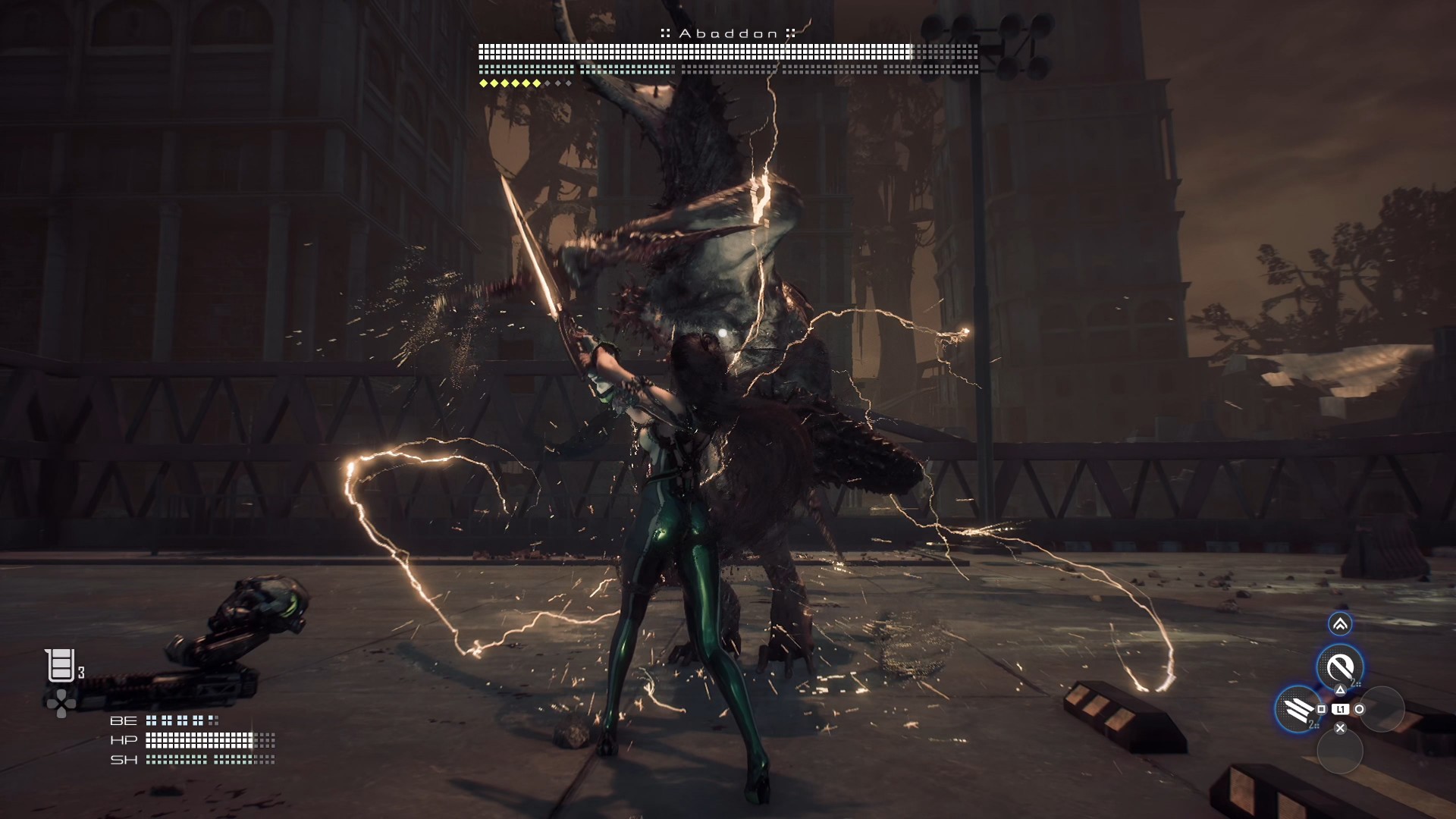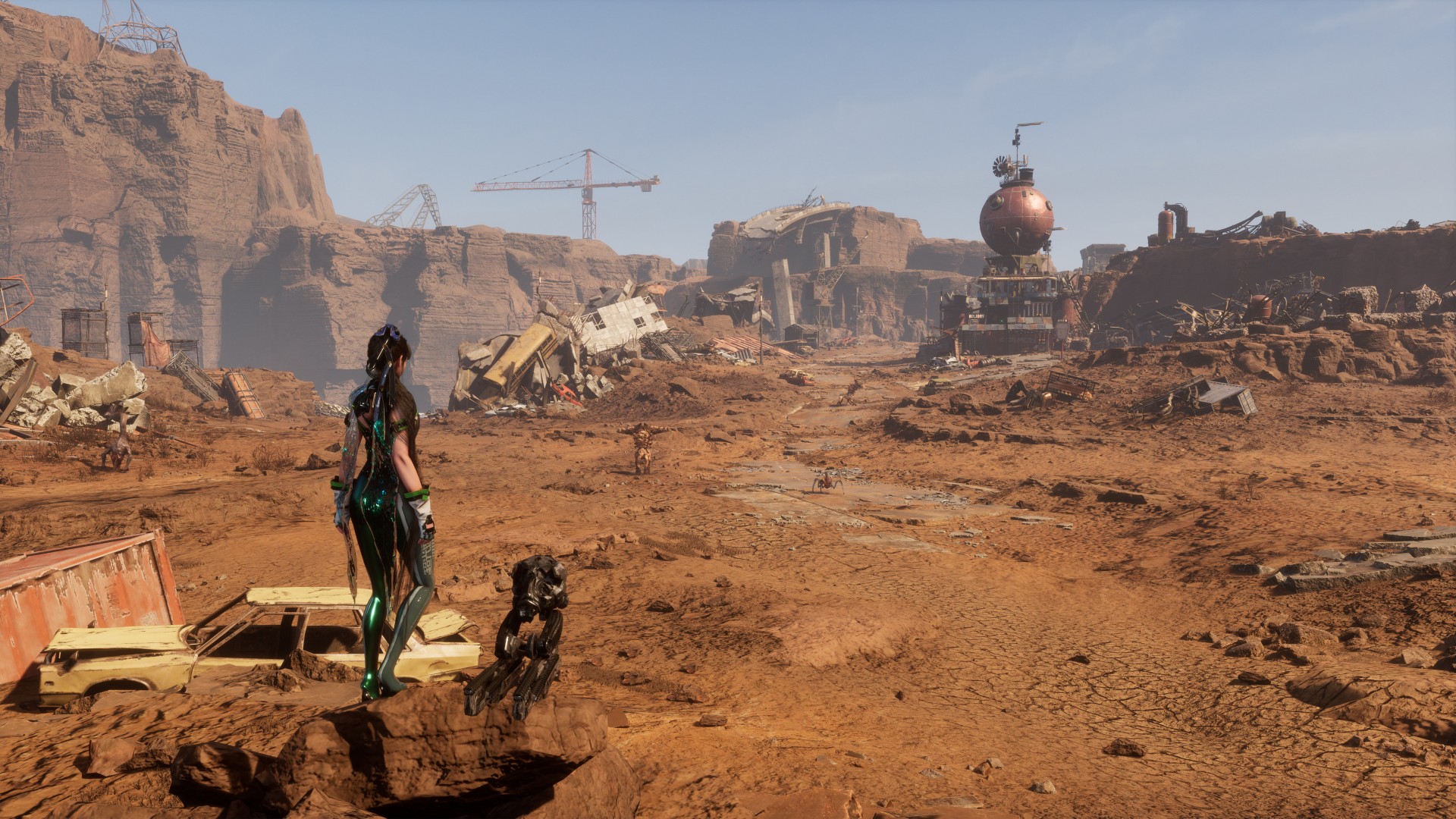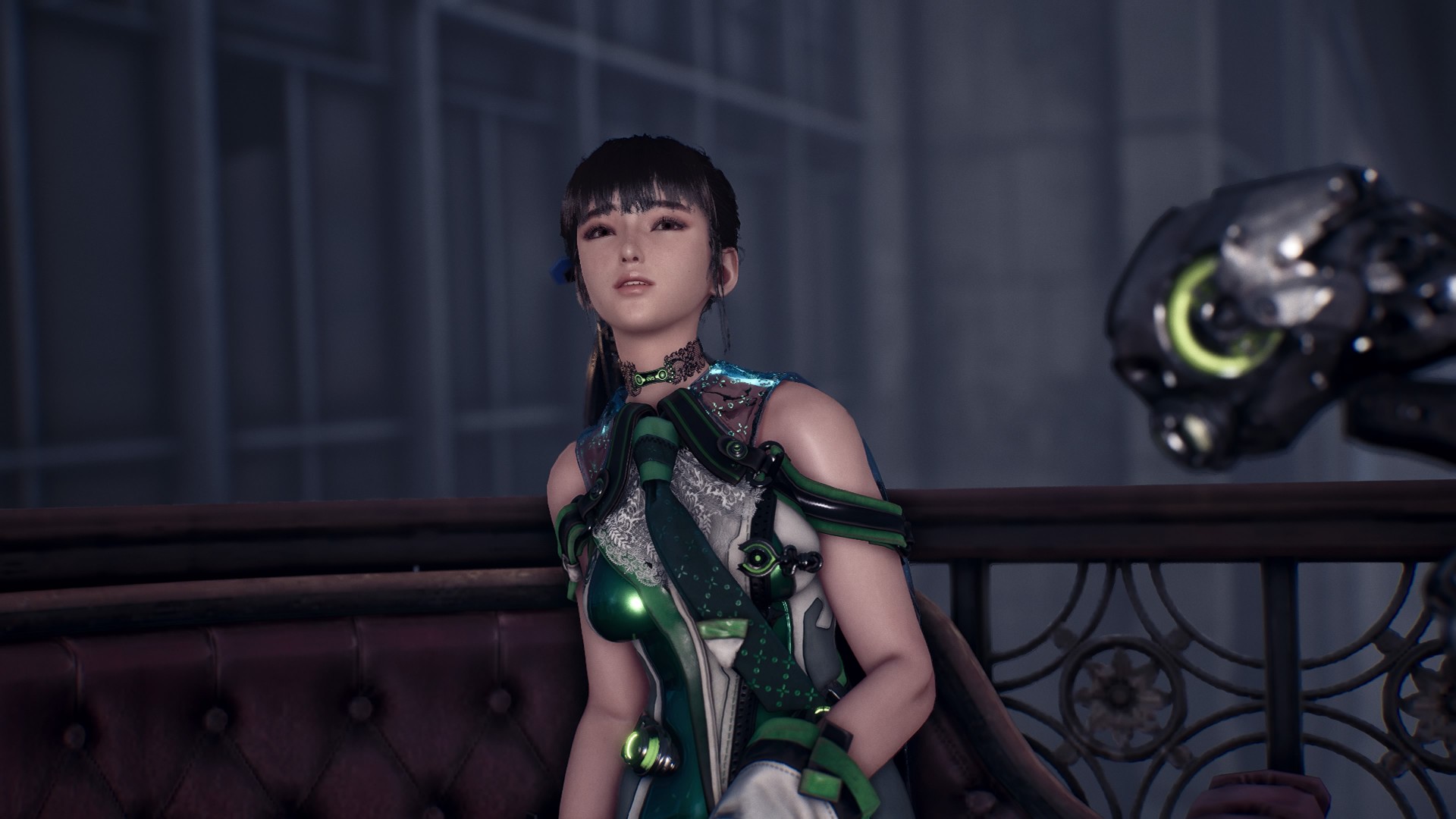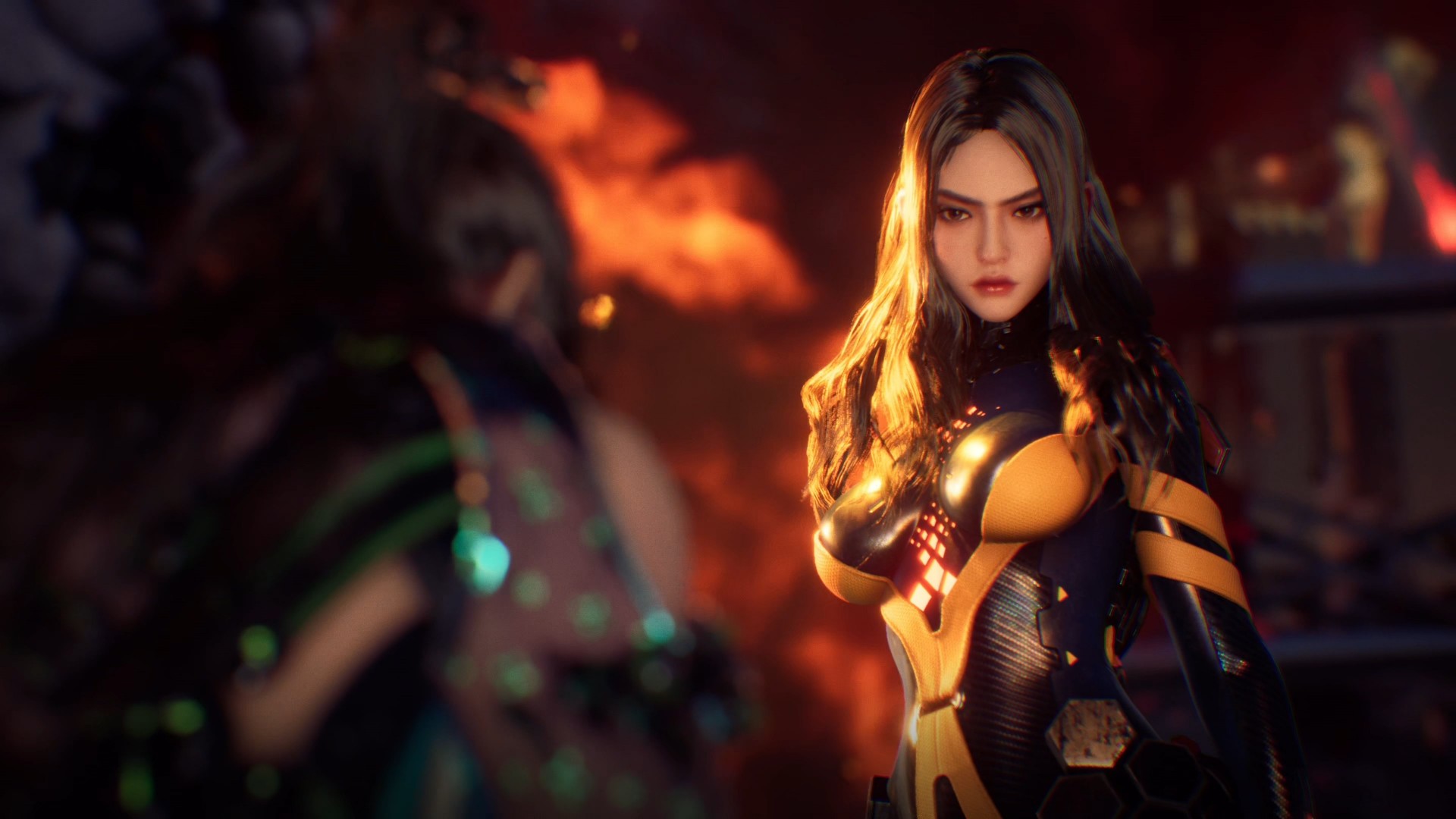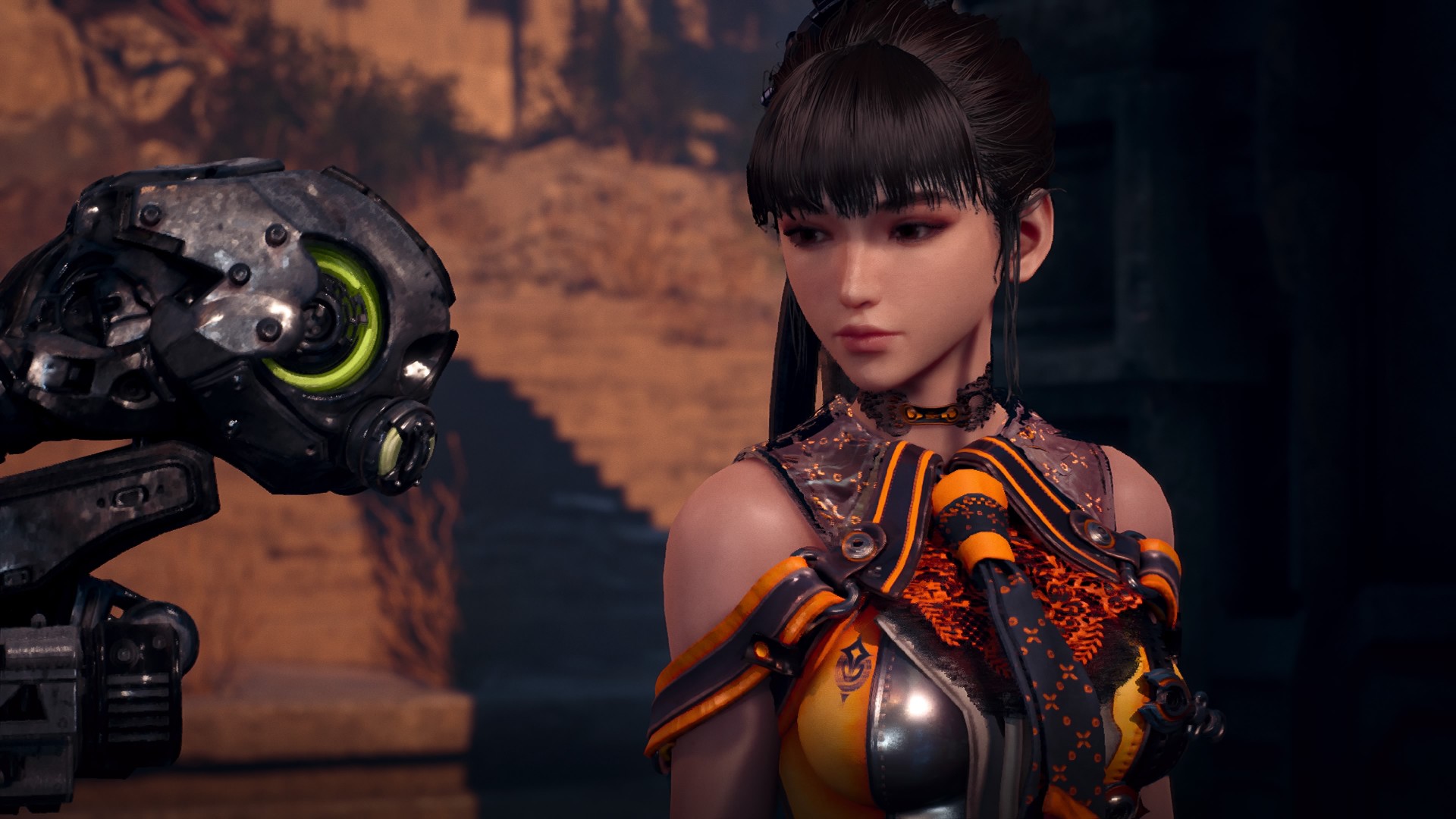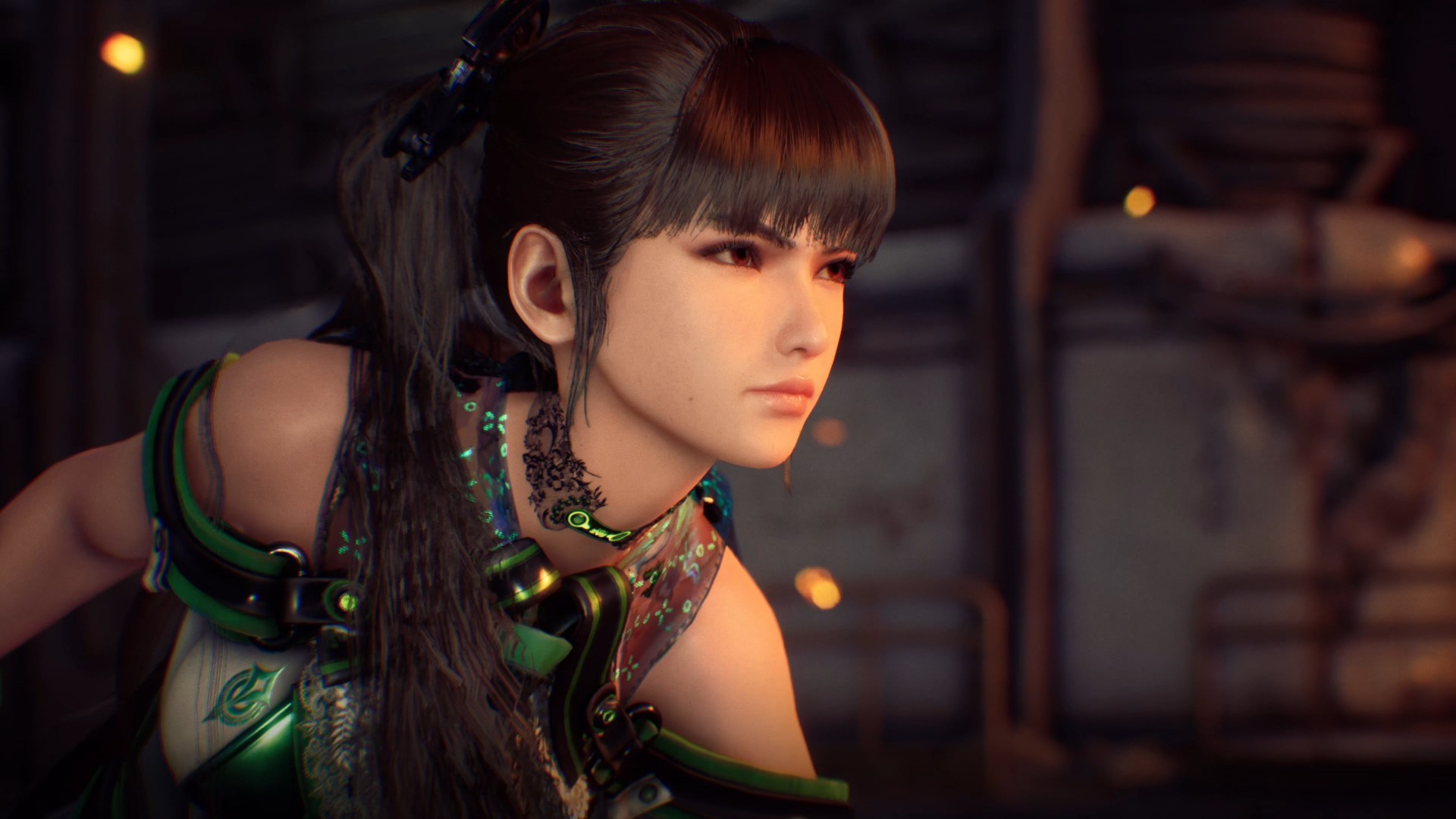
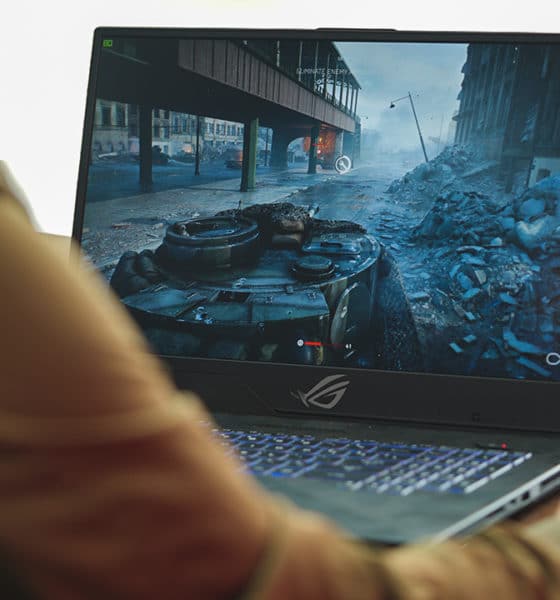
This is not the same laptop we reviewed before from ASUS. They do look alike and even have identical names, but this one is the bigger brother. This is the GL704 model of the ROG Strix Scar II with a 17-inch display.
It’s not every day that we get to play with 17-inch laptops, because they are simply cumbersome to bring around. They’re heavy and bulky, plus they don’t easily fit inside laptop bags. This one is different though; it’s like a 15-inch notebook thanks to its ultra-slim bezels.
Not only that, but it also has the latest discrete graphics available for laptops — the GeForce RTX series from NVIDIA.
What is it like to bring around a 17-inch gaming laptop? Here’s my review.
It’s got a high-gloss metal lid
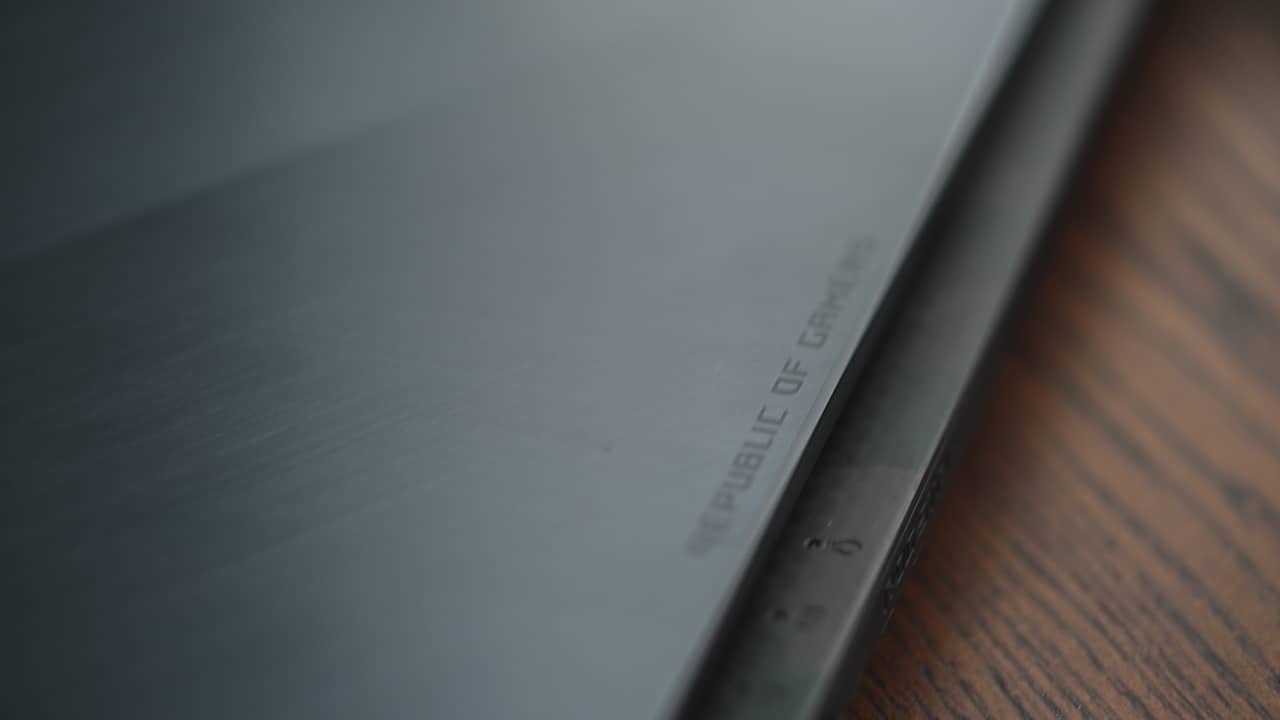
The ROG logo still lights up, too
There are plenty of ports on the left

(L-R) Power, Ethernet, mini-DisplayPort, HDMI, 3x USB-A, 3.5mm audio
With a few more on the right
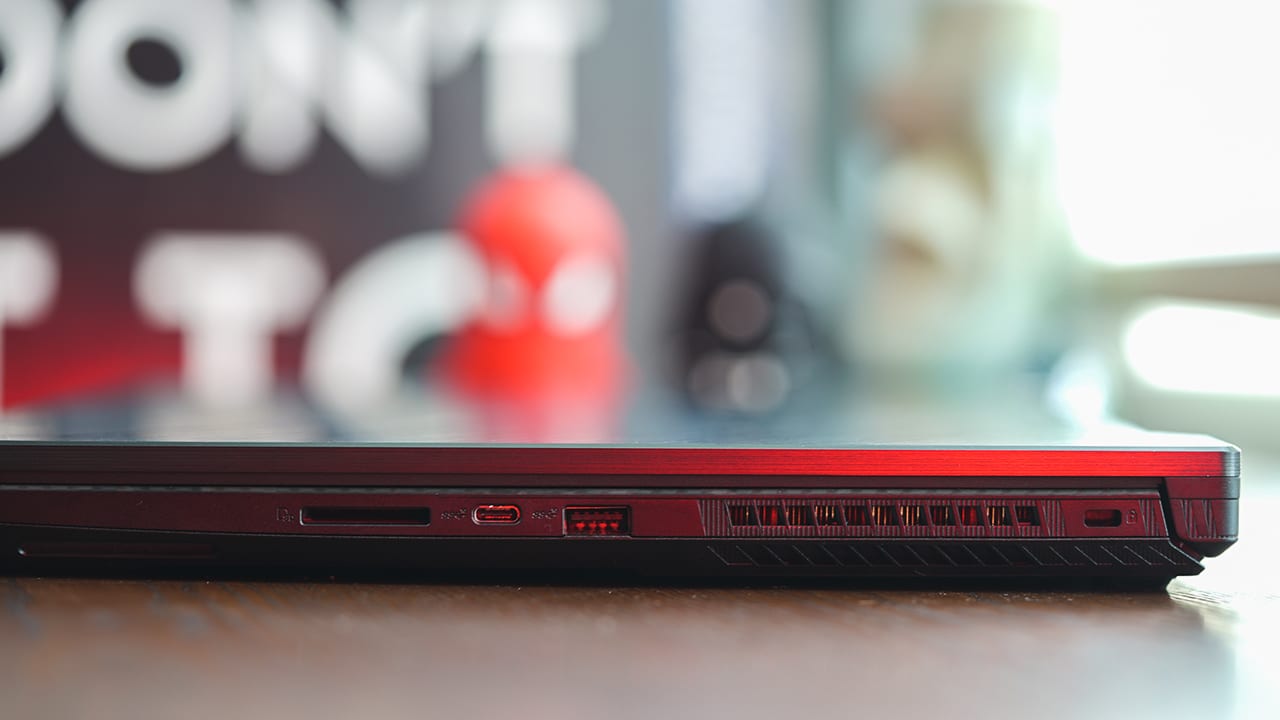
(L-R) SD card slot, USB-C, USB-A, Kensington lock
The back is where the heat comes out

Away from the user
The keyboard is FPS-friendly
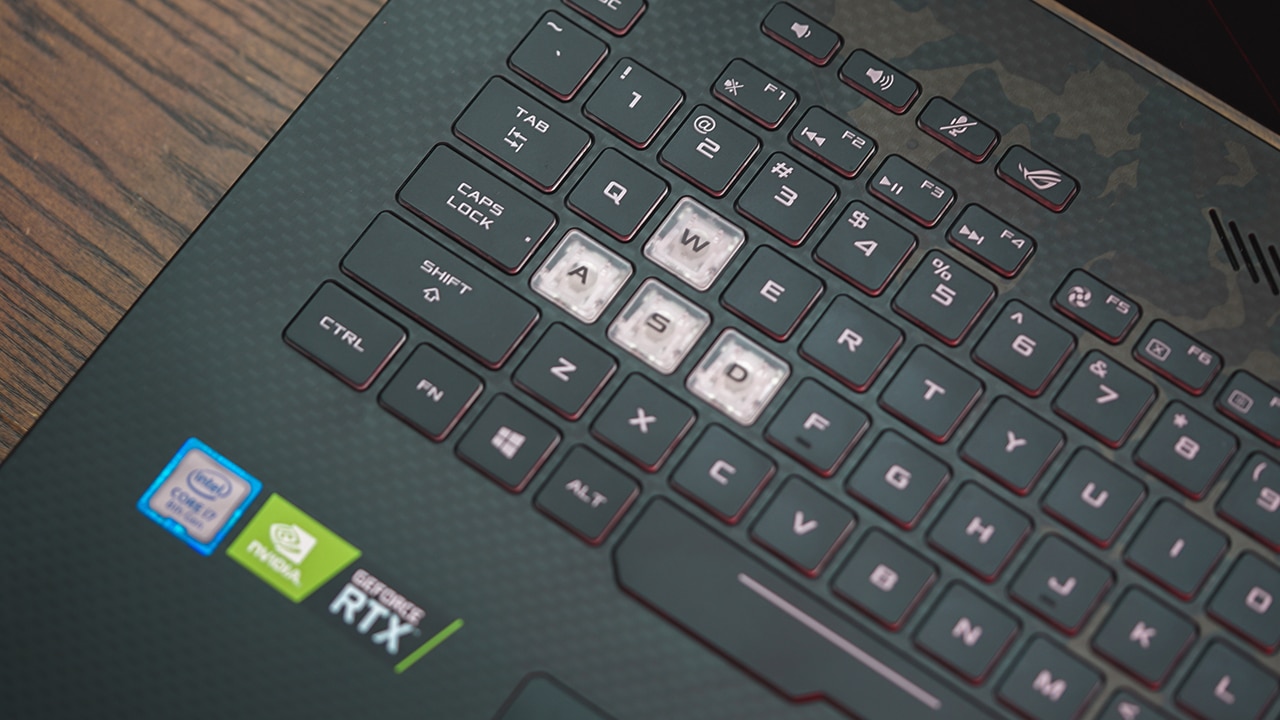
You won’t miss the WASD keys for sure
There’s another ROG logo inside
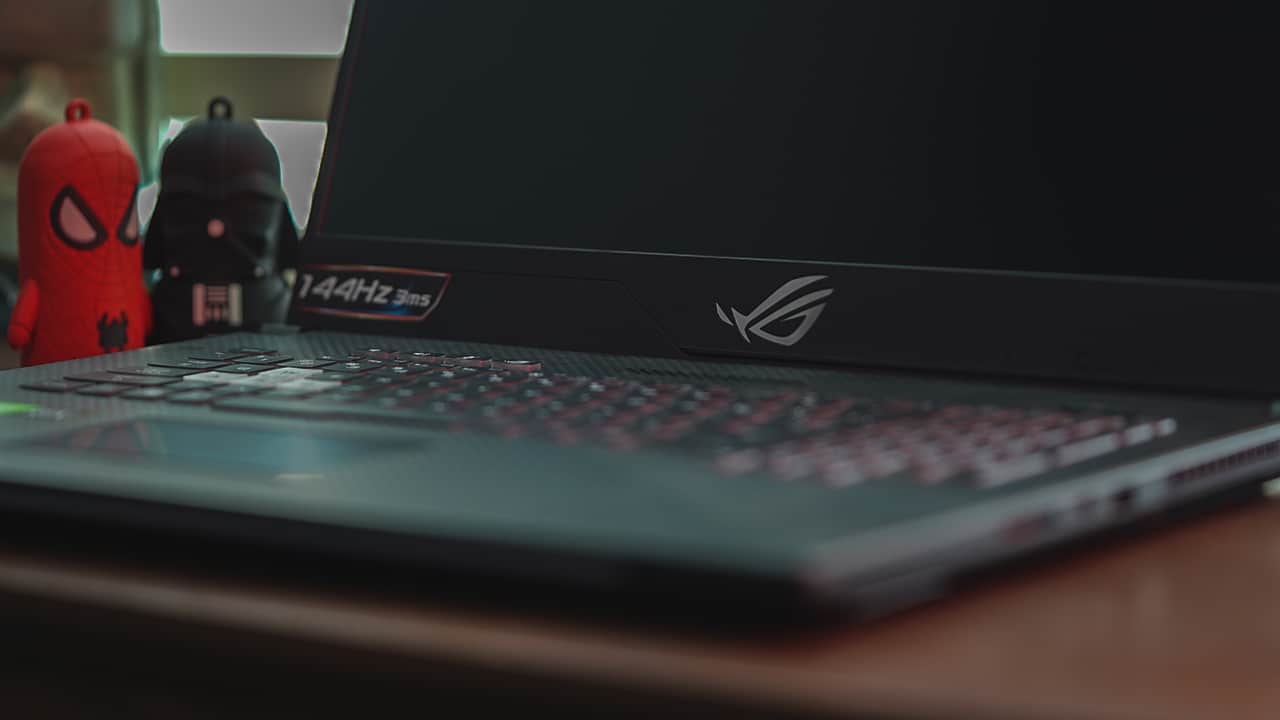
To remind you that it’s a gaming laptop
The ultra-narrow bezels are to die for
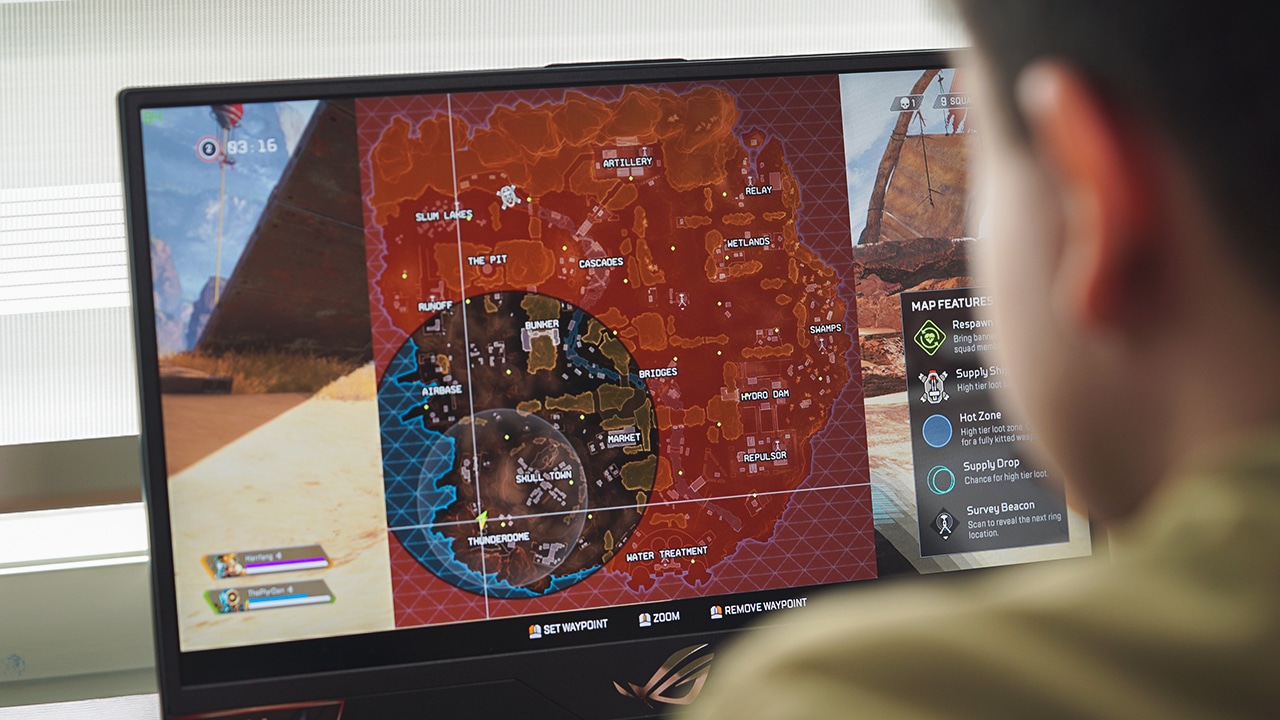
Kinda reminds me of the Dell XPS 13
It looks very familiar
The GL704 is essentially an enlarged version of the previous 15-inch variant. Right off the bat, you can tell that this is an ROG laptop. It has the aesthetics of a gaming notebook complete with a camouflage pattern and RGB lights.
The chiclet keys which ASUS calls HyperStrike Pro are not mechanical, but they are clicky and well-spaced. Since the Scar II is designed for FPS games, it has transparent WASD keycaps. If you’re more into MOBA, you should look into the Strix Hero II.
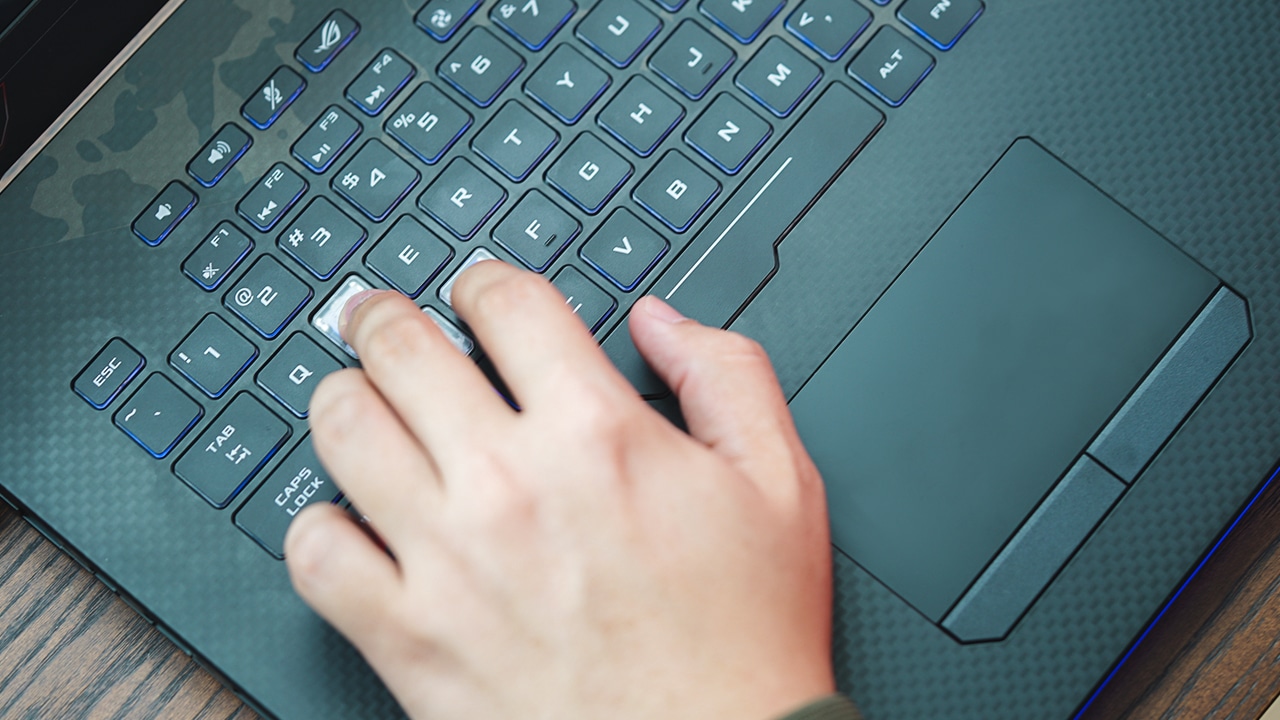
What makes this keyboard game-friendly are the little adjustments that make a world of difference. There are gaps between the function keys for easier identification, the spacebar is slightly extended and reshaped for fewer misses, and the arrow keys are not cramped.

As for the trackpad, it has a smooth surface and it uses Windows Precision drivers. It has support for all the Windows 10 gestures and two separate buttons for left and right click. While the trackpad is a good one, ASUS also bundles the Strix Scar II with a gaming mouse.

Inside the box, you get a free ROG Impact mouse which I find responsive. The mouse has an RGB ROG logo which is customizable via ASUS Aura Sync, as well. It also has a DPI switch smack in the middle that’s handy in combat games. You’ll just have to get a nice mousepad to match the peripheral.
The overall construction of the Strix Scar II is near premium. By mixing metal and hard plastic, you get the best of both worlds. The aluminum cover lid defines the craftsmanship of the laptop, while the majority of the chassis is understandably made out of polycarbonate to help with the thermals.
Speaking of, ASUS is proud of their new HyperCool Pro thermal system which doesn’t only keep the laptop’s temperature in check, but it also expels dust particles and dirt that may get trapped inside the fans.
Specs make the difference
The main reason why you should get the GL704 is its graphics card. It’s one of the first in the market to have the latest GeForce RTX graphics from NVIDIA. The particular model I have for review sports the RTX 2060 with 6GB GDDR6, although it also comes with the more capable RTX 2070.
The full specs of the laptop include an Intel Core i7-8750H processor and 16GB DDR4 memory. For storage, it has a main 256GB PCIe SSD and secondary 1TB SSHD for the large chunk of files like your AAA games.
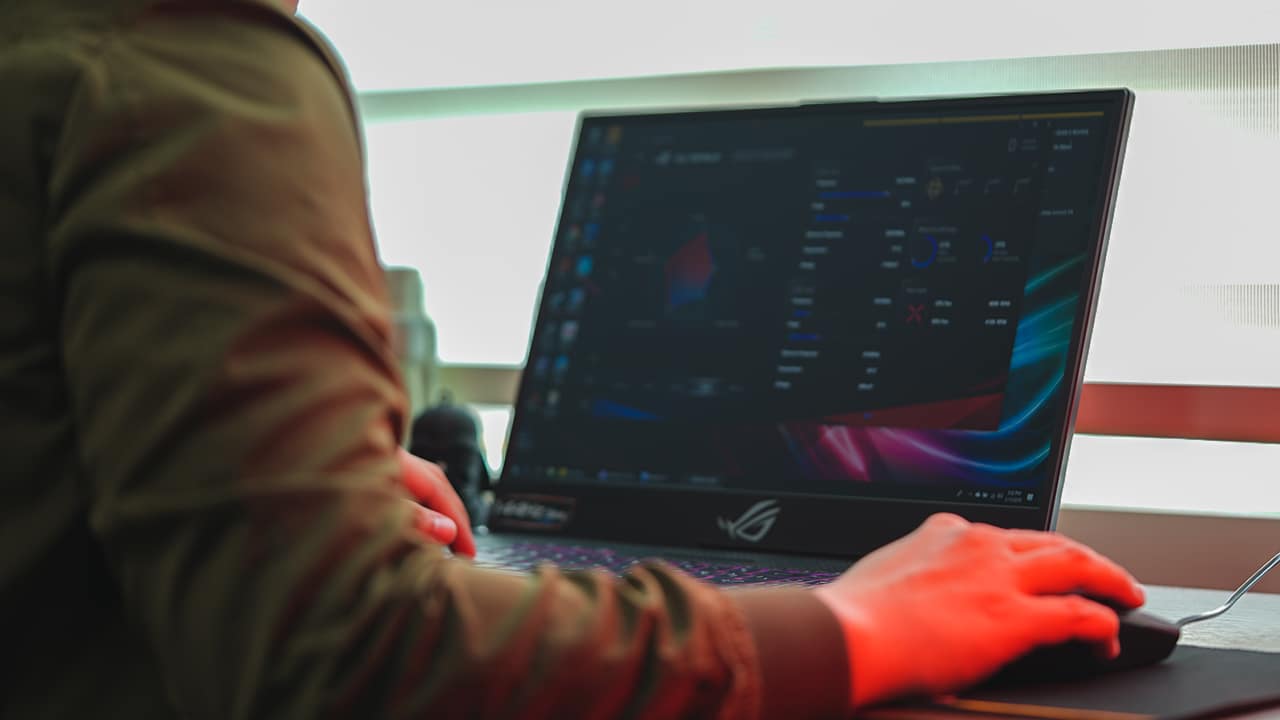
On the software side, there are a lot of pre-installed apps to complete the ROG experience like the ROG Armoury Crate which acts as a hub to check the laptop’s condition. There’s also GameFirst V for network optimization, ROG GameVisual for tweaking the display, Sonic Studio III for adjusting the audio, and Sonic Radar III for optimizing the surround sound effect on supported games.
There aren’t many titles out there that take advantage of ray tracing, which is the main selling point of the new RTX graphics. Good thing Battlefield V got updated to support ray tracing for improved reflections. However, Battlefield V is such an action-packed game that you might not fully notice the improvements during combat.

Here’s a comparison with ray tracing turned on and off. The game’s settings panel doesn’t allow for complete shutdown of ray tracing, so the closest to off is low. The preset graphics has to be set to low as well, which drastically changes the whole environment.
Anyhow, ray tracing is all about realistic and real-time reflections. You can see the water puddles nicely show the capabilities of RTX. Everything is shinier with ray tracing. In ultra settings, Battlefield V on the Strix Scar II averages around 55fps and spikes above 60fps when there’s not much going on in the scene.
Outside ray tracing, the Strix Scar II can easily handle other popular titles. I was able to enjoy Apex Legends on its highest-possible settings at around 110fps, while Fortnite averages 100fps
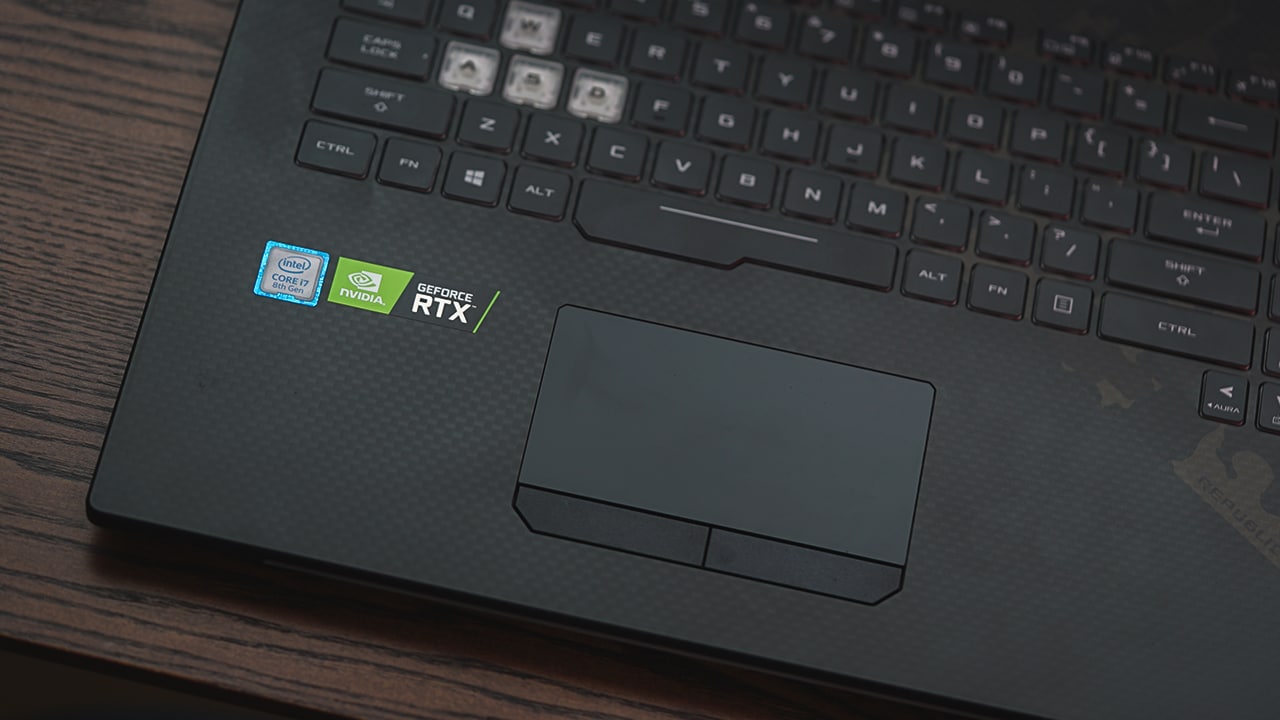
Is ray tracing worth the upgrade? That depends on where you’re coming from. Those on GTX-series graphics might not find RTX on mobile to be lucrative enough, and they can skip this for now because the previous generation’s graphics cards are still some of the best out there. Also, the number of titles supporting ray tracing won’t excite the whole gaming population.
It’s not an Ultrabook
Nobody should expect long battery life from a gaming laptop, at least for now. When playing games on the Strix Scar II, you should have it plugged in to ensure that the graphics card is not working with limited power.
When you do need to unplug and use the laptop remotely, you have three hours before the laptop puts itself to sleep and wait for its charger. Charging the Strix Scar II will take about an hour and a half using the included 230W power adapter.
Is this your GadgetMatch?
The ROG Strix Scar II is ASUS’ special machine for those who are competitive in FPS gaming. It’s also a treat to AAA-title gamers thanks to its upgraded RTX graphics. It’s the smallest 17-inch gaming notebook with next-generation performance, so what more could you ask for? Aside from a better webcam placement and battery, of course.
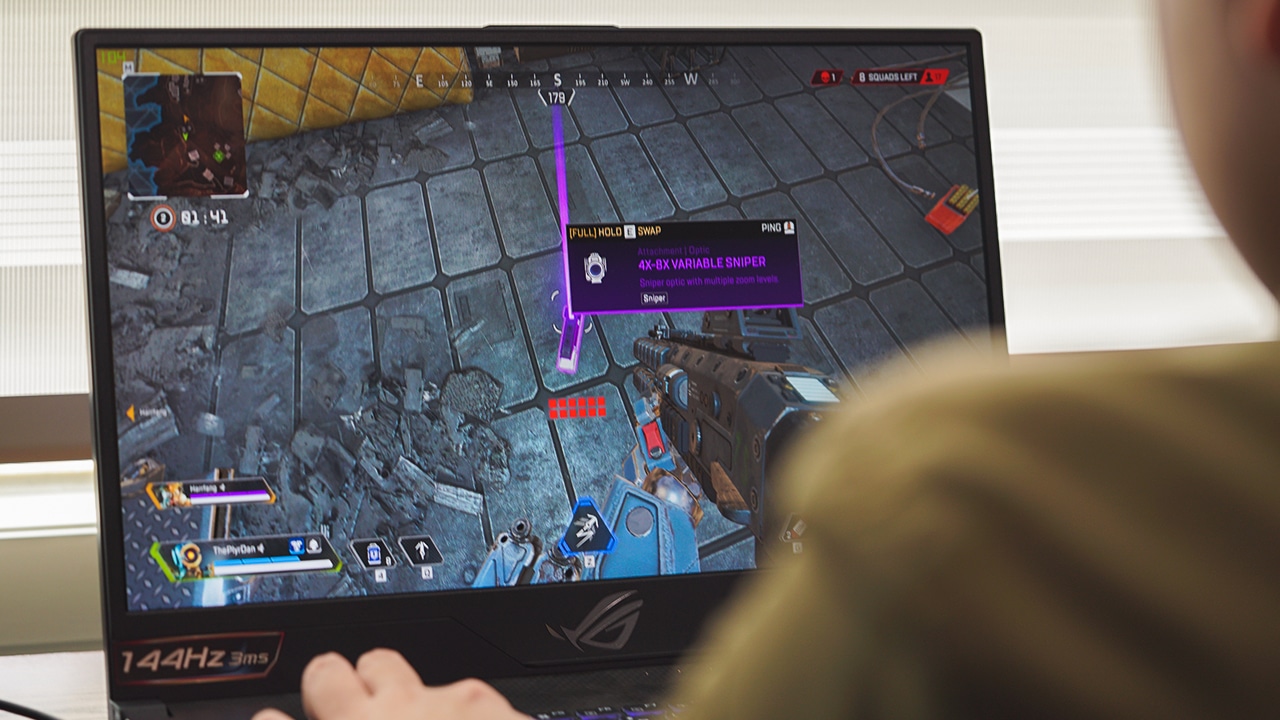
A machine this good comes at a price. It starts at PhP 124,995 (US$ 2,400) which gives you RTX 2060 graphics. If you want to have a more powerful 17-inch gaming laptop, you could get the RTX 2070 variant for PhP 149,995 (US$ 2,885). Both variants are available in ROG SM Megamall and ROG Concept Stores in the Philippines.
A piece of advice: If you’re getting a gaming notebook and have the money for it, you should go for the high-end model because you won’t be able the upgrade the graphics chip after purchase.
SEE ALSO: The ASUS ZenBook S13 does the job while looking good

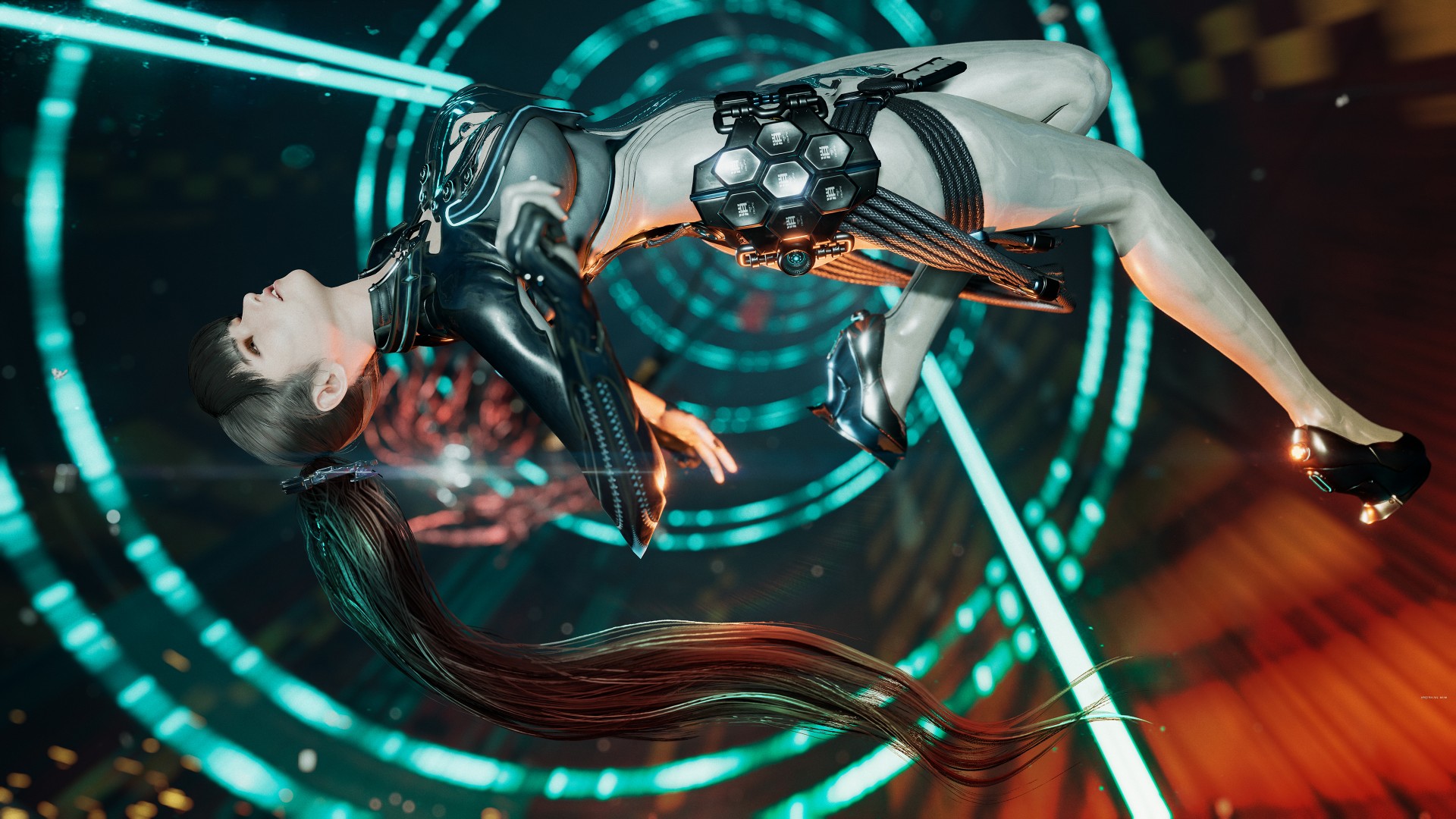
We didn’t have the best impression of Stellar Blade after spending time with the demo. Unlike certain players who poured a full game’s length of hours playing, our reception was lukewarm due to various reasons. But after finally having some time to focus on it, we now have a better understanding of its charm–and that goes beyond character design.
The game’s director has been ever-present in various gaming and tech news websites sharing nuggets about the game and reacting to the many comments made about the proportions of its female characters. That’s a rabbit hole we’re not diving into. Instead, we’re piggy-backing on one of his responses: Just pick up a controller and play it.
Steep combat learning curve
Stellar Blade’s combat didn’t click with us right away. But that’s because we approached it more like a hack-and-slash and not for the precise combo-parry sequence that it demands. A fellow reviewer aptly described our experience: It was a lot more “Soulslike” than we anticipated.
It took a while to get over that hurdle. For one, this writer isn’t particularly fond of Soulslikes. Skill issue. That’s tough considering a big part of this game’s charm is its combat. We can’t say that it fully clicked with us, but it certainly has its moments.
In combat, you have to pay attention not only to your enemy but also to how the protagonist, Eve, acts in different combo animations. If you’re not careful, you might find yourself getting hit during a lull in your combo.
You don’t have to memorize every single combo, although if you could, that’s certainly an advantage. We can compare the practice to memorizing combos of characters in Tekken, although at a milder rate.
Parrying is tricky but that’s not the only way to counter your enemies. One of the first skills you unlock is one that lets you get behind your enemy after they unleash a fatal attack (cued in with blue indicators) and hit back with your own counter. The animation looks so good that you’ll feel like an absolute badass every time you do it. It’s one of the moves that never got old throughout the entire playthrough.
As you progress through the game you’ll unlock ranged weapons that will expand your combat capabilities further. Hard combat enthusiasts should have a field day.
For more casual players, there’s no shame in switching to Story Mode which is what we did for about 70% of the playthrough. It’s easier, sure. But it can still present challenges especially during certain encounters.
The boss battles are TOUGH
We’re going to chalk this up again to skill, and perhaps patience, issue. But Stellar Blade’s boss battles are incredibly tough. Not to the point that you’ll want to throw your DualSense controller though.
What can make it frustrating is that the patterns of the enemies, especially the earlier bosses and mini-bosses, are easy to track. But they’re not exactly easy to deal with.
Parrying becomes an even more critical skill in these encounters. It’s one of the reasons why we opted to slide down the difficulty. Otherwise, this writer will never finish the game.
Pulling from different games, worlds
We have seen many compare Stellar Blade to the Nier games. Other than the setting, another big contributing factor in that comparison is the soundtrack.
During roaming, exploring, and combat, the music will change from time to time. However, they stick to this theme that’s a little eerie. It’s hard for us to describe but it’s almost like a crescendo that never quite swells up. It matches the game’s world perfectly — it feels hollow and devoid of life but still has a sliver of hope.
Combat isn’t the only thing you’re doing here. While it’s mostly linear at first, Stellar Blade offers a healthy mix of exploration, platforming, and puzzle-solving.
The puzzles don’t get in the way of the pacing. They’re quite engaging and offer a decent level of challenge. Roaming and exploration will yield you loot to improve your gear and stats. Occasionally, a Naytiba (the game’s primary foils) will surprise you for a good jumpscare moment.
Stellar Blade doesn’t reinvent anything nor does it offer anything particularly new or groundbreaking. But everything it borrowed from other games is retrofitted to match the game’s vibe and overall aesthetic. The result is a polished experience of familiar gaming mechanics.
Eve
Another aspect that did not grab us as much during the demo is the main character, Eve. The first hour of the game doesn’t do much to endear the player to her.
That slowly changes as you play through the game. Through a mix of cut scenes and world-building collectibles, you get a better sense of what Eve is, her mission, and ultimately her purpose.
If you’re familiar with the animé Violet Evergarden, Eve and that show’s protagonist share a similar character arc. They initially seem one note and bland, but the layers are peeled back as you learn more about them and how they relate to the world and the people around them.
Is she hot? Hell yeah. But as cliché as it is, she’s certainly more than what meets the eye.
Should you play Stellar Blade?
Unlike the PlayStation 5 exclusive that immediately preceded it, Stellar Blade has plenty in common with past PS5 exclusives — visually captivating, cinematic experiences, with satisfying gameplay.
Its level of challenge is closer to Sekiro and Bloodborne but it’s also not quite as difficult. In the same category but certainly not in the same stratosphere.
It also has an alluring charm that goes beyond its aesthetics. As mentioned earlier, nothing about it is particularly new or groundbreaking. But it’s polished and cohesive. There’s something about the overall feel of the game that draws you in and makes you want to see it through.
Stellar Blade is a Day 1 purchase if you’re up for the challenge. And if you consider the game director’s goal of having a high quality AAA console game from South Korea which is dominated by PC and mobile gaming, we say they did just that. Now, it’s just up to us to pick-up the controller and play.
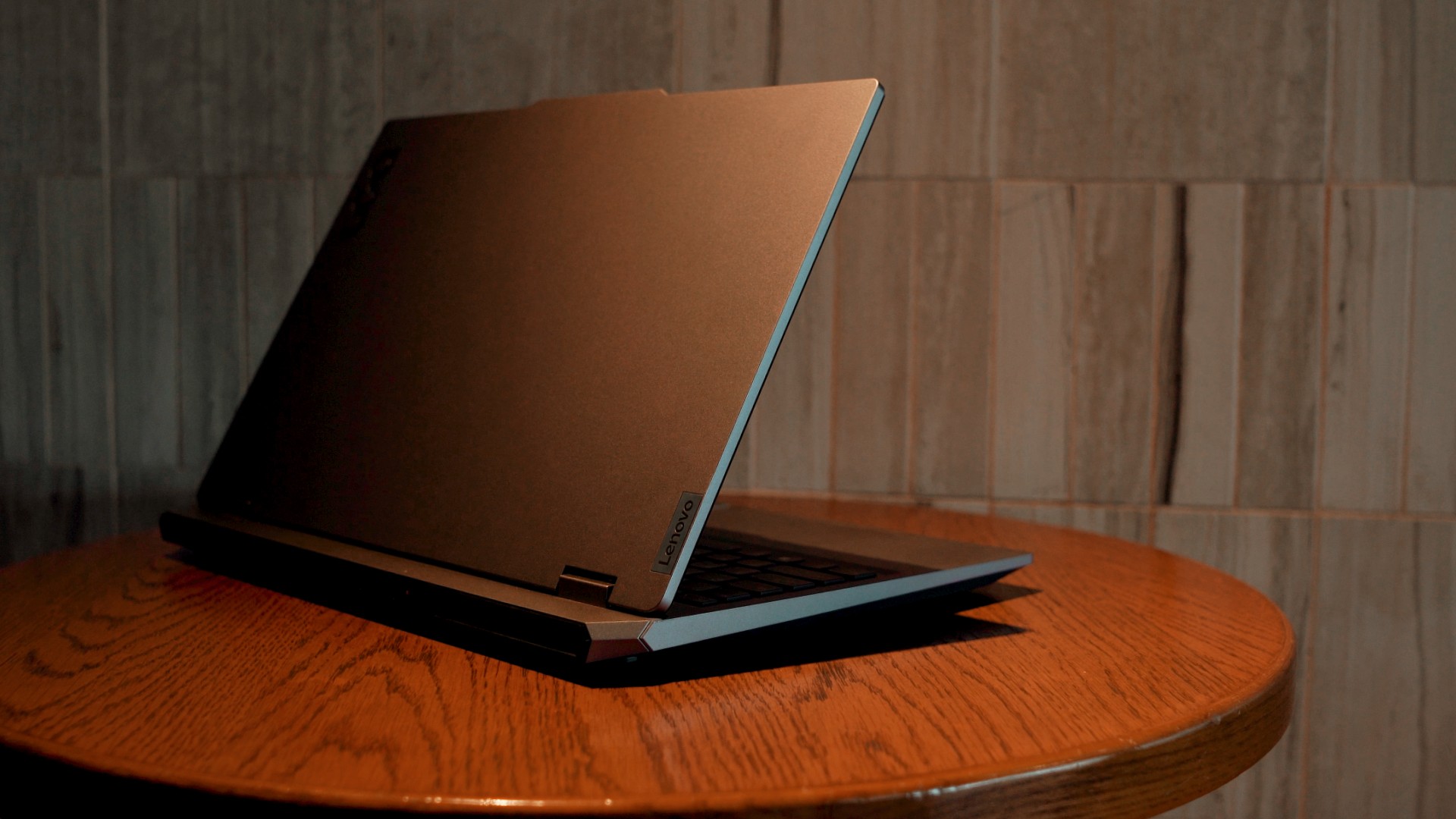
Get your game on with the Lenovo LOQ 2024. This capable laptop is your entry point to PC Gaming and a lot more.
It comes an absolutely affordable price point: PhP 48,995.
You get capable hardware and the hood to support gaming and more. The Lenovo LOQ 15IAX9I runs on the 12th Gen Intel Core i5 processor and Intel Arc Graphics.
Those are key to bringing unreal graphics to this segment. Supporting latest tech like DirectX 12 Ultimate, players are able to enjoy high frame rates on the Lenovo LOQ.
Creating content? It comes with AI Advantage to help boost performance. Engines and accelerators boost the media processing workloads especially for creatives. It also works with Intel’s X Super Machine Learning, Leading to images that are as close to reality.
The laptop supports a configuration of up to 32GB of RAM and 1TB of SSD Storage.
As for its display, the device has a large 15.6-inch, Full HD panel that is more than enough for gaming, video editing, content consumption, and whatever else you do on a laptop. This display has 144Hz refresh rate, 300 nits brightness, and anti-glare.
Videos come out clear, crisp, and realistic. Audio is punchy and as loud as it gets. Windows Sonic elevates it more when you use headphones. And it just takes a few minutes to render HD videos on editing software.
As it runs on Windows 11, if you are going to use it for work, you can take advantage of various features. The Lenovo Vantage Widget is there for constant reminders, Copilot will help you organize your tasks, and Microsoft Edge is there for casual browsing.
There is an assortment of ports at the back for easy connectivity. And as this is meant for gaming, we put it to the test. Racing that looks better with high frame rate? Check. Shooting titles that require heavy work? Not a problem. You can play all your favorites and not worry about performance.
Best of all, it takes less than an our to juice up this laptop all the way to 100%.
So, whether you’re looking to get started with PC Gaming, or an upgrade for work and entertainment needs, the Lenovo LOQ has you covered.
This feature is a collaboration between GadgetMatch and Lenovo Philippines.
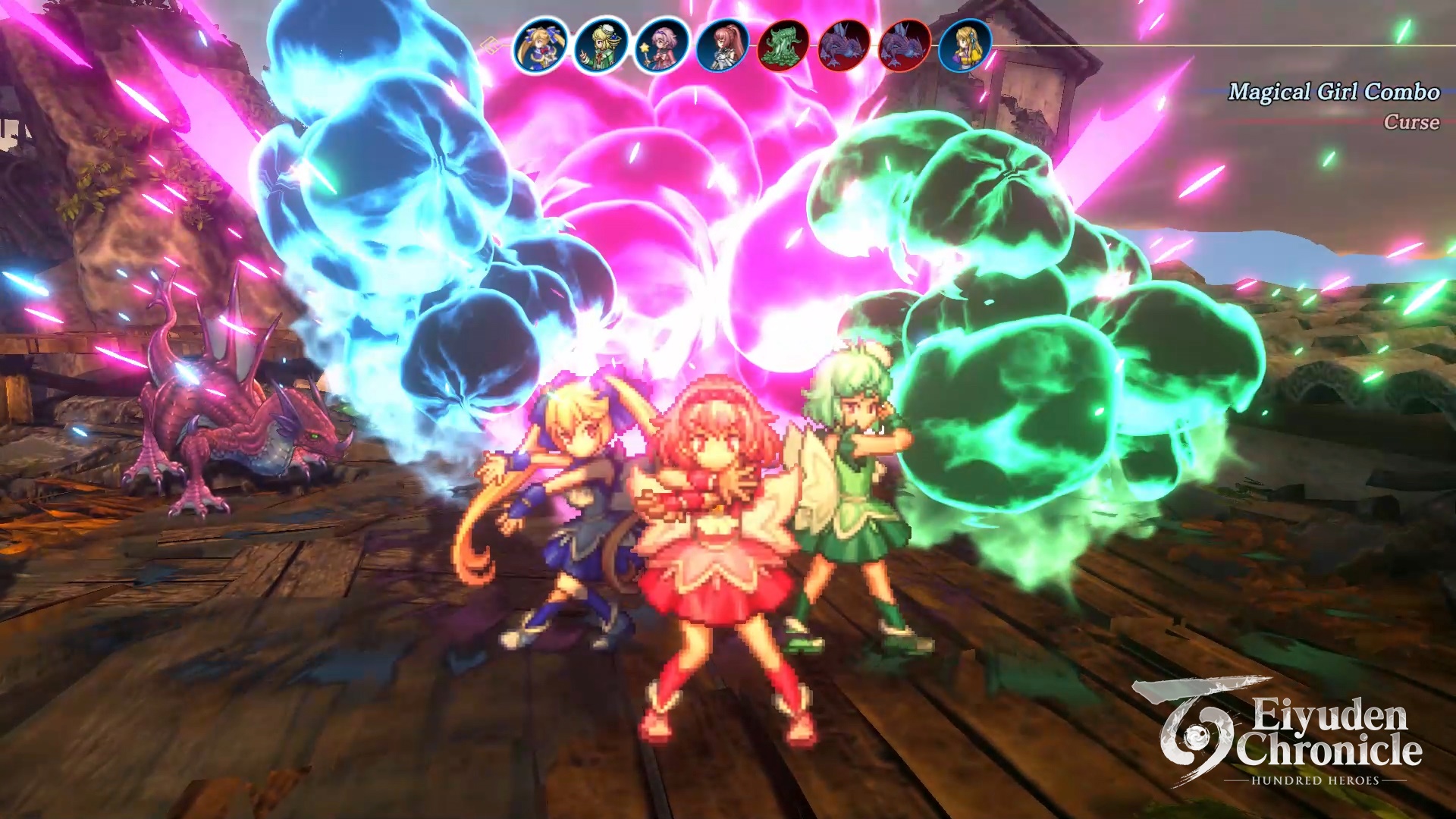
Rabbit and Bear Studios and 505 Games’ Eiyuden Chronicle: Hundred Heroes is now available across multiple platforms. One of the most anticipated JRPGs in recent memory may now be played on PlayStation 4, PlayStation 5, Xbox X|S, Xbox One, and Nintendo Switch. Moreover, it may be accessed on PC via Steam, the Epic Games store, and GOG.
Eiyuden Chronicle: Hundred Heroes is crafted by game developers Junko Kawano (Suikoden I, IV) and the late Yoshitaka Murayama (Suikoden I, II). The title features a modern take on classic 2D side-scrolling games. It has a six-character battle system, meticulous 2D sprites and 3D backgrounds, and a riveting story. As the name suggests, you can play over 100 characters.
GadgetMatch had the privilege of playing the game’s early preview here: Eiyuden Chronicle: Hundred Heroes First Impressions
The refreshed environment immediately stands out. There is more detail, depth, and movement compared to how side-scrolling games of the past used to be played. The game lets players choose their party mates. Meanwhile, the actual combat is turn-based, giving players room to strategize what sequences or gimmicks to select.
With more than 100 characters to choose from, the game also allows players to appropriately select heroes fit for certain regions and dungeons throughout the story. Moreover, some are designated catalysts that can give you access to more of the world’s treasures. In between, users may enjoy mini-games, like the fishing side quest in the preview. The collected fish can be part of another mini-game — cooking — as ingredients for recipes you can cook with.
-

 Events2 weeks ago
Events2 weeks agoStellar Blade: PlayStation taps cosplayers to play Eve for game’s launch
-

 Features1 week ago
Features1 week agoFortify your home office or business setup with these devices
-

 Gaming2 weeks ago
Gaming2 weeks agoThe Rogue Prince of Persia looks like an ultra-colorful roguelite
-

 Accessories2 weeks ago
Accessories2 weeks agoLogitech unveils G Pro X 60 gaming keyboard: Price, details
-

 Reviews1 week ago
Reviews1 week agorealme 12+ 5G review: One month later
-

 Gaming2 weeks ago
Gaming2 weeks agoLenovo confirms development of a Legion Go 2
-

 Deals2 weeks ago
Deals2 weeks agoTCL P635 TV: Big savings for TCL’s anniversary
-

 Gaming1 week ago
Gaming1 week agoNew PUMA collection lets you wear PlayStation’s iconic symbols








